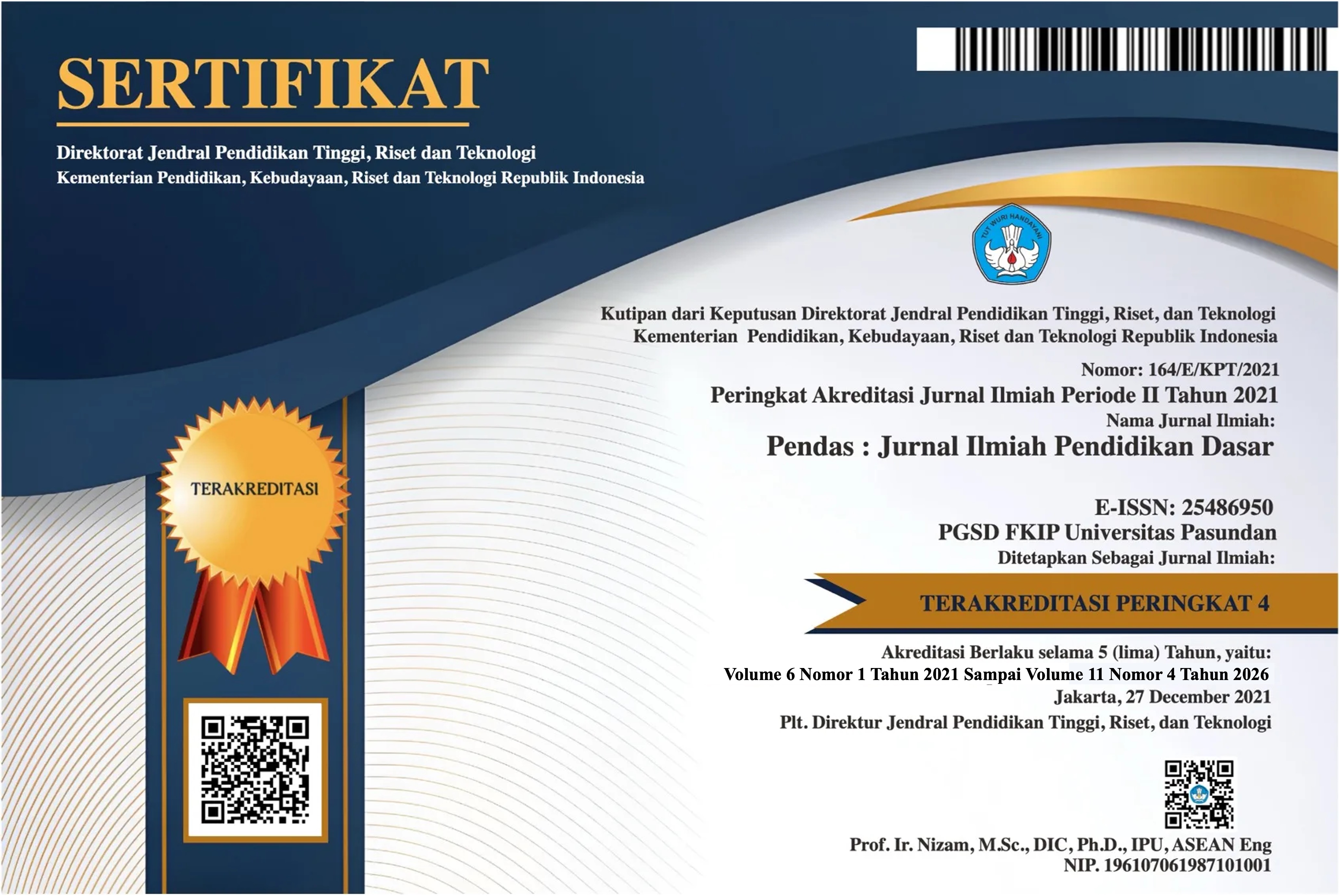STUDENTS’ EXPERIENCE IN DEVELOPING SPEAKING SKILLS IN ACADEMIC PRESENTATION COURSE
DOI:
https://doi.org/10.23969/jp.v10i04.34775Keywords:
Students’ Experience, Academic Presentation Course, Speaking Skills, Public Speaking, Narrative Inquiry, EFLAbstract
This study investigates how the Academic Presentation Course supports EFL students in developing their speaking skills through both linguistic and non-verbal aspects. Using a narrative inquiry approach with three participants, the research explored their experiences before, during, and after the course. The findings show that students initially struggled with anxiety, fast speech, and reliance on memorized scripts. However, through guided preparation, rehearsal, and feedback, they improved in fluency, grammar, vocabulary, pronunciation, and comprehension, while also enhancing eye contact, gesture, and intonation. Ultimately, the course fostered both technical competence and confidence, shaping them into adaptable, audience-oriented communicators.
Downloads
References
References
Akhter, N. (2021). Developing speaking skills in ESL/EFL contexts: A review. International Journal of English Language Teaching, 9(4), 45–53.
Al-khresheh, M. H. (2024). Challenges of EFL speaking competence in higher education. Journal of Language and Education Research, 12(1), 15–27.
Alam, Q., & Ashrafuzzaman, M. (2018). Challenges of speaking English in Bangladeshi classrooms. International Journal of Language Learning, 10(1), 32–45.
Anggini, D. (2021). Academic speaking: Design, formality, and execution in EFL contexts. Asian EFL Journal, 25(3), 87–101.
Arroba, R., & Acosta, M. (2021). Speaking as social interaction: Pragmatic competence in EFL. Journal of Applied Linguistics, 14(2), 33–47.
Bocskor, Á. (2023). Pronunciation and intelligibility in EFL classrooms: A suprasegmental perspective. Language Teaching Research, 27(5), 755–771.
Brooks, G., & Wilson, J. (2014). Using oral presentations to develop students’ language skills. ELT Journal, 68(2), 162–173.
Brown, H. D. (2003). Language assessment: Principles and classroom practices. Pearson Education.
Burns, A. (2017). Teaching speaking: A holistic approach. Cambridge University Press.
Bylkova, S., Ivanova, O., & Petrova, T. (2021). Integrating active learning into academic presentations. Journal of Language and Education, 7(4), 120–133.
Carnegie, D. (2018). The quick and easy way to effective speaking. Gallery Books.
De Jong, N. H. (2023). Comprehension as an interactive process in second language speaking. Applied Linguistics Review, 14(2), 211–230.
Derakhshan, A., Khalili, A., & Beheshti, F. (2016). Developing EFL learners’ speaking skills through task-based instruction. Theory and Practice in Language Studies, 6(4), 703–710.
Dincer, A., & Yesilyurt, S. (2017). Motivation to speak English: Evidence from Turkish EFL learners. English Language Teaching, 10(4), 135–145.
Fauzan, U. (2016). Enhancing speaking ability through interactive storytelling. Journal of English Teaching and Research, 1(1), 45–57.
Grieve, R., Woodley, J., Hunt, S., & McKay, A. (2020). Student presentations: Balancing assessment and learning. Assessment & Evaluation in Higher Education, 45(6), 893–905.
Ibrahim, N., Hilmi, H., & Zain, A. (2016). Multimodal communication in EFL presentations. International Journal of Applied Linguistics & English Literature, 5(4), 180–187.
Kehing, M., & Yunus, M. (2021). Speaking challenges among Malaysian EFL learners. Journal of Language and Communication, 8(2), 55–66.
Khalilova, S. (2023). Vocabulary mastery and academic communication in EFL. Journal of Language Research, 14(1), 102–118.
Leong, L. M., & Ahmadi, S. M. (2017). An analysis of factors influencing learners’ English-speaking performance. International Journal of Research in English Education, 2(1), 34–41.
Lucas, S. (2009). The art of public speaking (10th ed.). McGraw-Hill.
Mak, B. (2021). Academic presentations as public speaking: Challenges and strategies. Journal of English for Academic Purposes, 52, 100–115.
Martiningsih, E., Wahyudi, A., & Rahman, N. (2024). Reducing speaking anxiety in EFL classrooms. Journal of English Language Teaching, 12(1), 22–35.
Mortaji, L. (2018). Extemporaneous speaking: Balancing structure and spontaneity. Journal of Language and Communication Studies, 6(2), 99–113.
Nwokedi, A. (2023). Mother tongue interference in Nigerian EFL learners’ speech. International Journal of English Studies, 23(2), 89–104.
Olha, H. (2023). Academic speaking skills in higher education. Journal of Language and Education, 9(3), 77–91.
Pawlak, M. (2018). Investigating speaking in EFL contexts. Studies in Second Language Learning and Teaching, 8(3), 333–356.
Pratolo, B. W., Zuhairi, A., & Priyono, A. (2019). Speaking anxiety among Indonesian EFL students. Indonesian Journal of English Language Teaching, 15(2), 99–113.
Pravitasari, R., & Paripurna, E. (2024). Public speaking clubs and confidence in EFL learners. TESOL International Journal, 19(1), 55–69.
Qizi, N. (2023). Grammar accuracy and communicative competence. Journal of English Linguistics, 11(2), 44–59.
Rao, P. S. (2019). The importance of speaking skills in EFL classroom. Alford Council of International English & Literature Journal, 2(2), 6–18.
Regina, Y., & Rosnija, E. (2024). The role of self-esteem in speaking performance. Journal of English Teaching, 10(1), 55–68.
Rendle, S. (2006). Non-verbal strategies in academic presentations. English for Specific Purposes, 25(3), 223–239.
Riftriani, D., Ikhsanudin, I., & Rezeki, Y. S. (2019). Students’ speaking anxiety in classroom presentations. JET: Journal of English Teaching, 5(3), 150–159.
Shakuntala, P. (2023). Pronunciation teaching in EFL contexts. Asian Journal of English Language Teaching, 31(2), 99–114.
Toghroli, R., & Afraz, S. (2021). Classroom presentations and vocabulary development. Journal of Applied Linguistics and TESOL, 12(2), 55–68.
Tran, T., & Phuong, H. (2019). Measuring fluency in EFL learners. Asian EFL Journal, 23(6), 210–225.
Virawan, R., Putra, P., & Indrawati, D. (2021). Communicative essence of language learning: Speaking in EFL contexts. Journal of English Language Teaching and Linguistics, 6(1), 88–103.
Wael, A., Asnur, M., & Ibrahim, M. (2018). Exploring students’ difficulties in speaking English. Eternal: English, Teaching, Learning, and Research Journal, 4(1), 84–95.
Wahyuningsih, S., & Afandi, M. (2020). The students’ difficulties in speaking at the English language education program. ELT-Lectura, 7(2), 97–106.
Wang, Y. (2024). Motivation, collaboration, and creativity in EFL speaking development. Journal of Language Learning, 14(1), 55–70.
Xi, J., Li, W., & Sun, Y. (2021). Academic speaking in EFL contexts: Definition and implications. Journal of English for Academic Purposes, 49, 100–112.
Zannrni, M. (2022). Classroom presentations and oral proficiency in EFL learners. International Journal of Instruction, 15(4), 175–192.
Zanyar, H., & Raheem, H. (2023). Assessing speaking proficiency dimensions in EFL contexts. Journal of Language Assessment Studies, 5(1), 33–50.
Zareva, A. (2020). Effective presentations in higher education: The role of audience orientation. Journal of English for Academic Purposes, 46, 100–108.
Downloads
Published
Issue
Section
License
Copyright (c) 2025 Pendas : Jurnal Ilmiah Pendidikan Dasar

This work is licensed under a Creative Commons Attribution 4.0 International License.


















